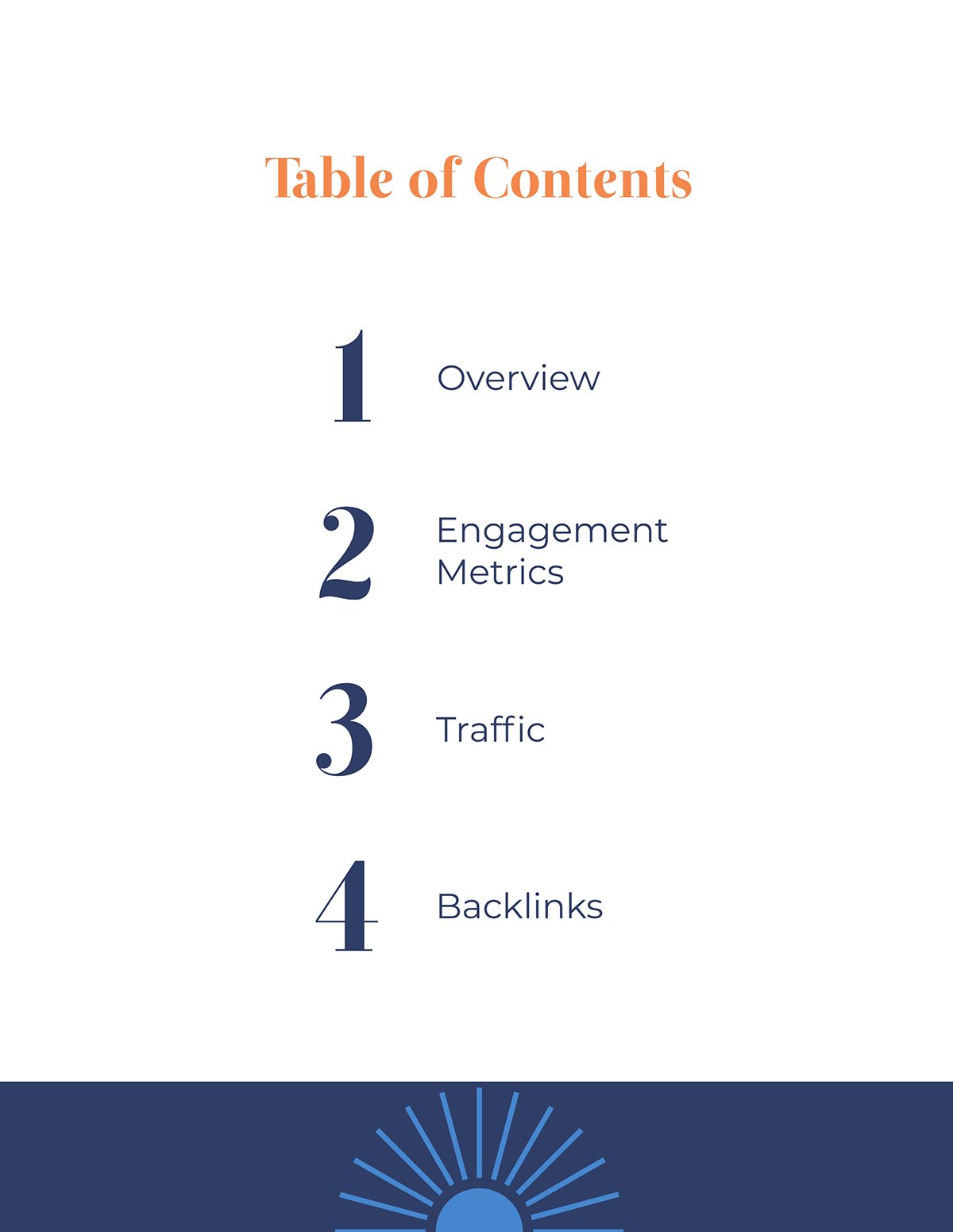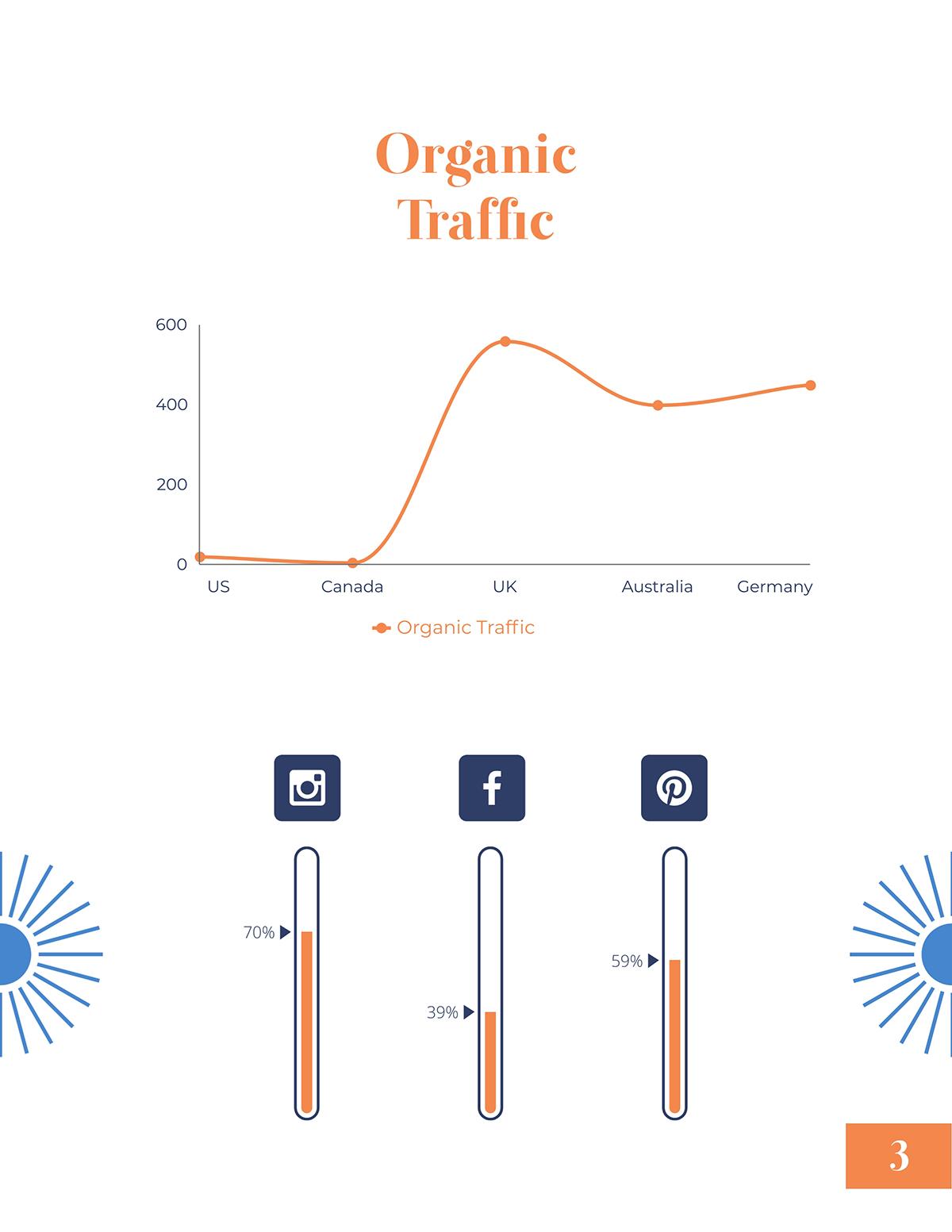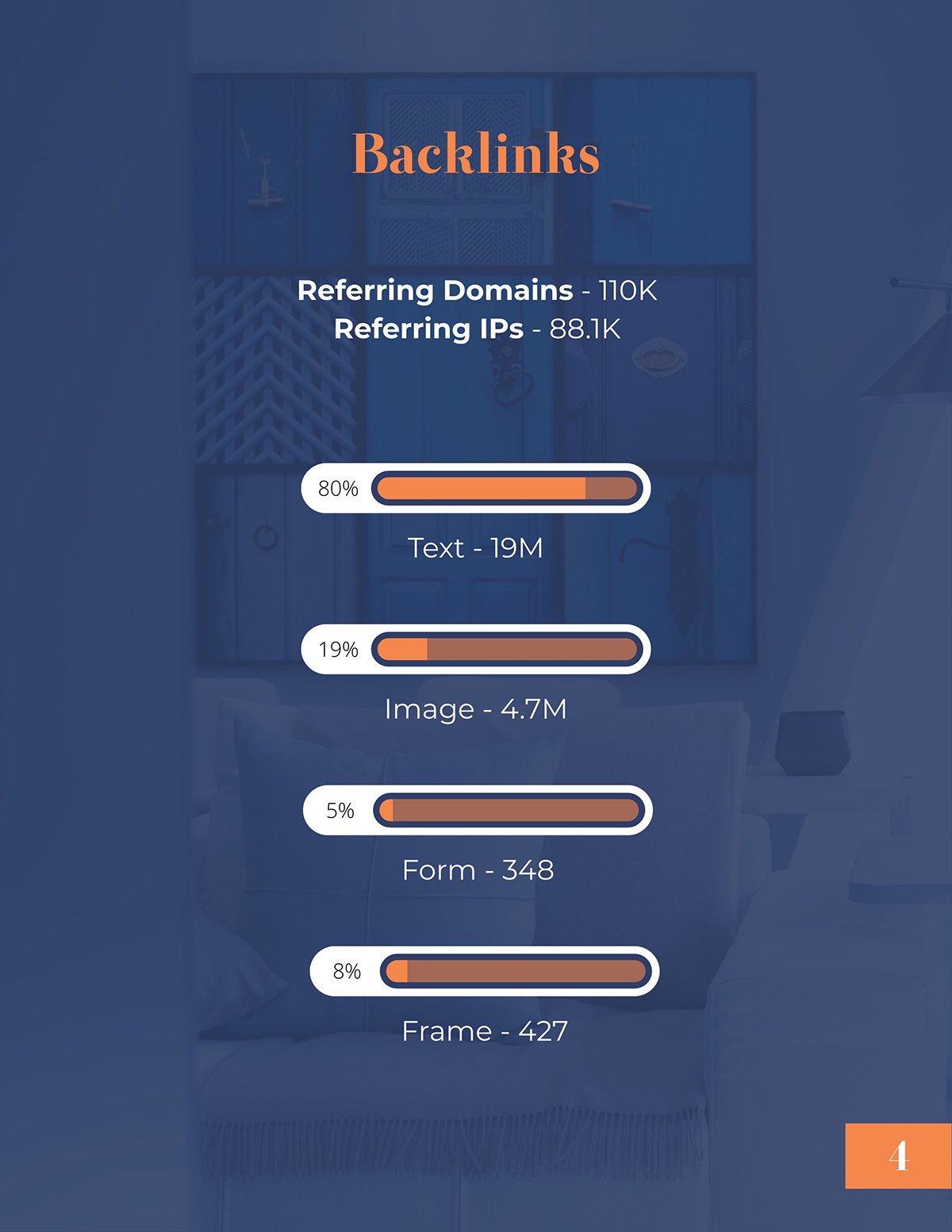
SEO is one of the most measurable marketing tactics. You can track everything from who visited your website and clicked your campaigns to where the user lives and which links they clicked on. Taking these measurements and putting them into an SEO report can be extremely helpful to gauge the effectiveness of the SEO campaigns you’ve been working on.
Data suggests that the #1 organic result is 10x more likely to receive a click compared to a page in the #10 spots. So, it’s no surprise why marketers and SEO consultants aim to climb to the top of the SERPs.
By creating an SEO report, you can see your website’s SEO health, the performance of your SEO activities, and key areas to gain valuable insights that shape your future SEO strategies.
That said, creating an SEO report can be overwhelming, especially if you don’t know how to write a report, where to get the data, or which metrics to focus on.
This guide will explore everything you need to know about SEO reports - what should a good SEO report include, the different types of SEO reports, tools you need to create your SEO report and give you a step-by-step journey to create one for your website.
If you need an extra hand, we've got loads of professionally designed report templates and an AI report generator that can make the entire process a breeze.
An SEO report is an integral part of your marketing strategy.
Whether you work in an agency or in-house, a good SEO report is necessary to ensure that stakeholders (usually your client or manager) can easily measure the performance and ROI of various SEO activities.
A quality SEO report is a concise and detailed summary of your website’s SEO performance.
To get the most from your SEO report, you need easy-to-understand yet powerful insights that are actionable. Most SEO analysts don’t have time to spend hours on manually creating SEO reports in spreadsheets. So, they use a quick and better alternative — SEO report templates.
Having an SEO report template handy means you can streamline your SEO reporting process, deliver reports to clients/managers faster, and extract insights without any hassle. While the needs of your clients may differ, there are certain key metrics that every company will measure and track for SEO performance.
It’s worth pointing out that in the early days, SEO reporting mostly included metrics like backlinks, organic keywords and click-through rates. But measuring only these basic metrics just doesn’t cut it anymore. You need to go beyond search traffic and clicks, as an authentic SEO strategy is all about winning long-term engagement, traffic, and readers for your website.
Identify key metrics you need to track and measure. For example, metrics like the inclusion of featured snippets, rise of brand searches, backlinks, target keywords, organic search, and even competitors’ growth are a good place to start.
Before we dive into the specifics around measurement and how to create an SEO report, we’ll explore some fundamental concepts of a solid SEO report: benefits, tools you need, and elements of a good SEO report.
Creating an SEO report has three-fold benefits: offers solutions to readers, helps build trust with your clients, and improves your expertise.
The primary goal of creating an SEO report is to understand what people are searching for online, the words they’re using, the solutions they’re looking for, and the type of content they wish to consume. Once you understand the intent of your target audience, you can improve your website’s SEO and connect to the people who are searching online for solutions you offer.
Secondly, by focusing on all the key metrics of your SEO, you build trust and authority with your stakeholders (clients or manager). This results in a healthier and stronger relationship.
Additionally, by creating an SEO report, you can measure the performance of your SEO strategies and tactics. This way, you can determine which campaigns work the best and which ones don’t.
Moreover, conducting an SEO site audit is a crucial aspect of this process; it uncovers potential areas for improvement and identifies issues that could be impeding your site’s search engine performance, thereby ensuring that every facet of your strategy is optimized for success.
In a nutshell, an SEO report caters to all three stakeholders — customers, clients, and SEO professionals — and drives benefits tailored to their needs.
Now that you have a good understanding of what an SEO report is and why you should create them, it’s time to get into the meaty sections!

There are plenty of SEO tools out there that you can use to create SEO reports. Challenge is, there are too many. For an SEO analyst or manager who handles multiple projects, campaigns, and websites, it’s a daunting task to gather data from multiple tools.
In our experience, we’ve found the following SEO reporting tools to be the most accurate and actionable for creating SEO reports:

The Google Search Console is a free tool that provides a number of actionable reports to help you identify opportunities, fix issues, see keyword performance, and receive messages from Google about your website’s health.
While you can’t make changes to your site directly from the Google Search Console, you can use it to submit pages to the Google index to check for errors across your domain property and verify your site’s health.
Unlike other tools like Google Analytics, Google Search Console only provides information about the traffic that comes from Google web search. So, if you want to focus on ranking higher in SERPs on Google, this tool helps you cut your way through segments like email, social media, and others to give you google-centric reports.
Think of it as an optimization tool.
The data you get from Google Search Console can help SEO consultants and website owners uncover new ranking opportunities, boost existing performance, and learn exactly how traffic is coming to their website.
KPIs to track: Top impressions for countries, devices, pages, and queries. Average CTR for pages and site, average position for pages and site.

Google Analytics tracks your website’s activity. From analyzing your top sources of user traffic to tracking goal completions and measuring how your competitors are performing, you can do it all with Google Analytics.
It is used to collect visitor insights, gauge the success of your SEO and marketing campaigns, discover user patterns and trends, obtain visitor information like demographics, device, engagement, and much more.
Google Analytics gives you a comprehensive overview of your website’s SEO performance. It provides data visualization and monitoring tools, including dashboards, motion charts, scorecards that represent user engagement and traffic changes over time.
KPIs to track: Users, bounce rate, sessions, average session duration, percentage of new sessions, pages per session, goal completions, page views.
SE Ranking is an ideal SEO reporting tool for agencies looking to improve their clients’ SEO performance. With features specifically designed to support agency workflows and reporting needs, SE Ranking helps agencies save time and deliver results.
You can use SE Ranking to track your clients’ keyword rankings, audit their websites for technical issues, analyze backlink profiles, easily find and automatically cluster keywords, and more. The tool also lets you create professional-looking, data-rich reports that showcase your clients’ SEO progress.
SE Ranking allows agencies to customize their reports and choose which information to include. You can add comments and explanations to report sections and send them manually or automatically on a schedule. You can also create branded reports with your company’s name, logo, and color scheme and build customized templates for further usage.
KPIs to track: keyword rankings, traffic, organic and paid competitors, website technical optimization, and backlink profile quality.

Semrush is one of the most advanced SEO platforms out there. It provides customizable reports that can help you accelerate and streamline your SEO reporting process.
With a dedicated feature called “My Reports,” Semrush allows you to dive deep into your website’s SEO statistics. The kicker? It allows you to blend the data on your website’s performance while including competitor data and Google Suite integrations.
For example, you can get aggregated data from Google Search Console, Google Analytics, Google My Business, Google Ads, and over 40+ Semrush tools.
You can use the “Site Audit” feature to cover technical SEO like site speed, resolving 404 errors, fixing broken links, and more. You can also view and export thematic reports that include crawlability, HTTPS, international SEO, site performance, and internal linking.
KPIs to track: Branded vs non-branded traffic, broken links, 404 errors, keyword rankings, organic sessions, organic visibility, and backlinks.

Ahrefs is best-known for “backlinking profiling.” When you enter a website domain in their backlink profile tab, you get a dashboard with info on your site’s backlinks, metrics, and organic traffic.
When you navigate to “Backlinks,” you get an in-depth view of all of your links: dofollow, nofollow, redirect, content, UGC, and more.
One of the ways experienced SEO consultants or website owners use this feature is to analyze their competitor’s links. For example, you can find pages that link to your competitors and check their link profile to understand why people link to their site.
Moreover, a particular feature called “Best by Links” helps you identify the pages on a site that have the most backlinks. This gives you an idea of top-performing content, so you can optimize your content and SEO strategy to create more engaging assets on your website.
However, this doesn’t mean that Ahrefs only gives you backlink reporting. You can use it extensively for keyword research, analyze it’s difficulty, search terms related to your keywords, and use that to optimize your website’s SEO.
KPIs to track: search traffic, keyword research, competitor backlinks, ranking progress for different keywords.

Moz is another great SEO reporting tool that helps you compile keyword lists and even make predictions about ranking for specific keywords.
You can use it to crawl your website on demand, analyze keywords by search volume, and research your competitor’s backlink profile. Popular features in Moz include Moz Keyword Explorer and Moz Local.
It lets you create custom SEO reports including ranking data, on-page optimization reports, set report schedules, and export the data to a PDF. You can either choose a SEO report template within Moz or create one from scratch.
KPIs to track: MozRank, page authority, root domain MozRank, domain authority, and external equity links.
First off, your SEO report should be clear and descriptive. It should highlight relevant data, key findings, and actionable next steps. Because, let’s face it — it’s pointless to create an exhaustive SEO report that includes long lists of keyword sheets or backlink history.
The main aspects you need to remember while creating an SEO report are:
By using an SEO report template, you can standardize the process, which in turn, will make it easier and faster for you to generate your SEO reports. It will also ensure that you have a proper report writing format in place. So if you’re time-pressed, you can quickly create a visually rich SEO report that clients can understand within seconds.
With Visme, you can create your own reports from scratch, or simply choose a ready-to-use template from their template library.
While there’s no definitive way to write the perfect SEO report, there are some must-have elements that contribute to a stellar SEO report:
It can be a little intimidating to see technical terms, numbers, and raw data in an SEO report. What you need is a clean overview that gives a high-level view of the important metrics of your website. This page should essentially represent the “executive summary” of your SEO report.
Think of the overview as a table of contents. It gives the client context about what the SEO report consists of and what they should expect.
Consider adding graphs and charts to visually show data, so it’s easier to understand. Remember, your clients may not have the time to dive deep into each single metric, so an overview should be simple and fairly short.
You can break down this overview section into the following:
After reading the overview, your client should be able to understand the progress of your previous SEO campaigns, project focus, and results. For example, they should know their website is ranking for their targeted, primary keywords. Or, their organic traffic has increased by 10% and generated 30 new leads.
If your clients have zero to little knowledge about SEO, an overview is a great element that will help them navigate the information easily.
Every SEO report you create should be tailored to the individual client’s goals.
For example, if your client wants to increase conversion rate, you should focus on KPIs like click-through rate, keyword rankings, bounce rate, and no. of leads. Avoid adding vanity metrics that are not relevant to your client’s goal. In this case, you can consider leaving out traffic.
KPIs demonstrate the success of your campaigns and shows how effectively you’re hitting your client’s goals. By measuring these KPIs you’ll know how well your strategies are working, which ones are not, and where to put more effort.
Some of the popular SEO KPIs include organic traffic, backlinks, conversion rate, and keyword ranking.
You can go the extra mile by including a brief summary of actionable next steps.
Let them know your course of action, which campaigns do you want to run, and which ones you want to put on hold. For example, if the website is rapidly losing backlinks, go after some link-building opportunities.
Having an opportunities section in your SEO report not only lays out the future strategies, but also helps your client understand how you’ll bring in revenue impact. Plus, a solid SEO plan with good numbers to back up your ideas can position you as a pro.
When preparing an SEO report, you’ll want a customizable and quick template that you can easily replicate every month (assuming you generate monthly reports). An SEO template will help you highlight all the important KPIs, outline actionable next steps, and show the effectiveness of your SEO strategy.
Visme’s report templates are fully customizable, giving professionals the flexibility to add, remove, modify any section. Having an SEO report template handy means you save tons of time, effort, and resources you’d otherwise invest if you were to create a report from scratch.

Since it’s a fully customizable template, you can tailor each slide to meet your client’s needs. You can modify the color scheme to match with the brand colors of your client, add your own logo, fonts, and align it with your style.
The template covers most of the fundamental KPIs that an SEO consultant should track to measure the performance of a website.
Let’s get started.

This is the very first step in your SEO report.
Add in your brand logo, date/month of the report, as well as your client’s website URL. You can level up this slide by adding smooth complementary colors, icons, and shapes from Visme’s rich collection.
Once you’ve done this, you’re good to go.

As its name suggests, this page is simply a table of contents that’ll help you structure your SEO report.

As discussed earlier, the Overview section of your SEO report is basically the page where you summarize the most important information. This will help you highlight improvements in various segments like organic conversions, search traffic, backlinks, branded searches, and click-through rates.
It’s worth pointing out that if your client has specific goals, make sure you include relevant data in the overview section and expand on it in the upcoming slides.
Clients who like to be more involved in their SEO will probably like to dig more into these highlights, while more hands-off clients might appreciate a quick overview to know exactly how their campaigns are working towards their goals.

Depending on your client’s goals, set the right KPIs.
By clearly defining the Key Performance Indicators (KPIs) and giving context about why you’re reporting them, you can conclusively demonstrate how you’re helping your client make continuous progress.
For example, if you’re writing content or creating new pages for your client, you might want to focus on the data related to those specific landing pages.
Here are a few important SEO KPIs you should include in your SEO report:
With these KPIs in mind, let’s move on to the next slides where you’ll give in-depth analysis of them.

This is probably the most important section of your SEO report.
Clearly mention which specific pages are getting more — or less — organic traffic, so your clients know how your SEO efforts have had a positive or negative impact on their ranking.
Here are a few things you must include in your organic traffic section:
Consider giving a segmented view of the organic traffic across different areas of the website - homepage, product, feature, blog, and landing pages.
Ahrefs lets you filter incoming traffic by country so you can see where most of your traffic comes from. You can compare week-over-week, month-over-month, and year-for-year performance for each category, group, or page.
Google Search Console lets you track “branded” phrases as compared to “generic” phrases.
Bottomline is, in this section of your SEO report, you should focus on your client’s organic traffic based on their goals. Look at their top performing pages. Analyze the organic traffic.
Do they stick around, or do they bounce right away? What are the top sources of organic traffic? Are conversions from organic increasing, decreasing, or remaining constant?

One of the essential SEO aspects is backlinks. Maintaining a healthy backlink profile is one of the biggest challenges SEO professionals face. This section in your report highlights your link acquisition efforts to the client in a well-documented manner.
Mention how many backlinks the site has gained or lost recently, what were the results of your backlinking campaigns (if any), and how do you plan to acquire more backlinks.
Here are a few things you must include in your backlink analysis section:
The backlink section of your SEO report should give a summary of the link outreach efforts and results. Consider breaking them down month-over-month, along with the goals achieved. You can also add a chart or graph from Visme’s collection to summarize the link acquisition distribution based on the type of links or domain authority of the websites.
Whether your client’s goal is to gain more organic traffic or rank at #1 in the SERPs for their targeted keywords, the bigger, long-term goal of SEO is to generate revenue. Along with other KPIs, the most important ones include revenue and ROI.
For example, if you put in $1 in SEO and get a $5 profit, your client would be happy to invest more in your SEO campaigns and help you do better. Show them how you’re bringing in leads to their sales funnel. If you’ve been building backlinks for their landing pages and 10 people/week are signing up for their demo, make sure you bring this to their notice.
Putting numbers, especially revenue, on your SEO report will help you build trust and authority. So, my advice is to measure click-through rates for CTAs like demo and free trial.

Once you’ve defined your KPIs and compiled all these sections, add a summary and an actionable roadmap to help the client understand what you’ve done in the previous month and what you'll be doing next to further improve the SEO of the site. Your summary should be concise and descriptive to identify any notable wins or major issues.
Creating an SEO report can be difficult, if not done correctly. That’s why I recommend using a template that you can quickly work around and present to the client.
Visme’s reports are an easy and quick way to get started. Be it email marketing reports, budget reports, modern customer service reports, or monthly sales reports, you can find a wide variety of report templates to get started.
Check out our free report maker tool to create your own template from scratch.
Design visual brand experiences for your business whether you are a seasoned designer or a total novice.
Try Visme for free